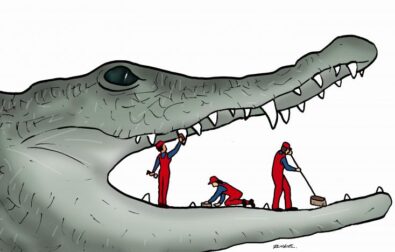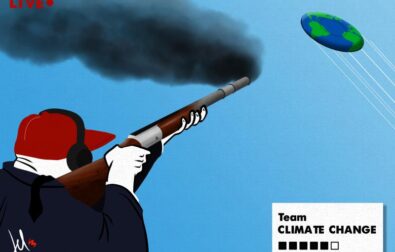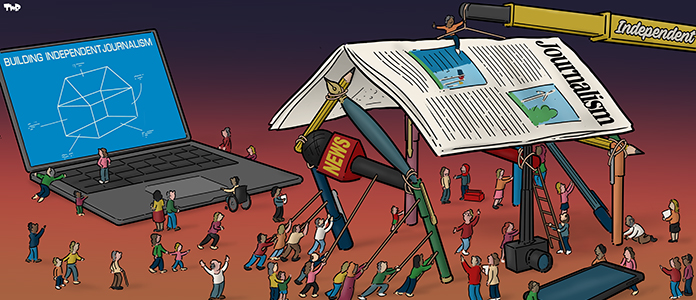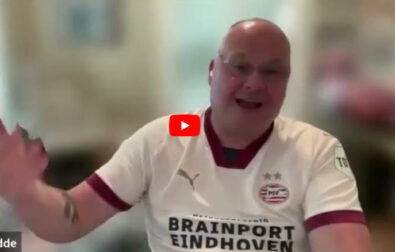Do you live in Europe? Have you ever seen an elephant in your neighbourhood? Neither did we, but it might not have been an uncommon sight if you were to live in the European continent millions of years ago. “People think they know Europe, but they don't, they don't know that European elephants still survive in Africa”, states Tim Flannery, the Australian palaeontologist, conservationist and explorer interviewed in the episode “Public Space & Ecology” of the European Pavilion Podcast from the European Cultural Foundation. The topic of this episode is the past, present and possible future of the European environment, and how it would fit in our conception of public space.
In his most recent book, Europe and natural history, Flannery tells the story of how Europe’s environment has changed and evolved: from its beginnings as a tropical archipelago, up until the crossroads of life that it is today. Crossroads is the key word here, as it is there that different species meet and engage with each other, leading to hybridisation, which has been a remarkable feature of the European flora and fauna. “Hybridisation it's been occurring in Europe at a very rapid rate, because Europe is a crossroads of the world where species from Asia, from Africa, from North America have met in the past and therefore mixed. And if they're sufficiently closely related, they'll hybridise and create often a stable new form of life and new species”. Hybridisation is a term often used with a derogatory meaning, but this isn’t necessarily right, as “as farmers know, hybrids are very vigorous and very fit and often better in many ways at surviving than a purebred species”.
From animals to humans
So far, we’ve talked about plants and animals, but what about us humans? Well, we behave pretty much in the same way, in terms of movement across the continents and migration. “If you take a longer view of Europe, it has been a place with enormous amounts of migration that have changed the land dramatically. So the very first migration events for the modern human species occurred about 38,000 years ago. And they involved a hybridization event with the neanderthals and which then colonized Europe since then [...] Each wave has brought in new genes and changed the land, creating new vibrant cultures. It's just a continuous process in Europe. There's always been people moving in and out and settling areas, in this very, very rapidly changing landscape”.
It is often said that history is the greatest teacher, so what lesson can we learn from this that we can put to good use today? Most of all, learning that there is no defined pure identity, as it has always been the result of the mixing of different cultures and people. According to Flannery, it is meaningless to search for the pure cultural identity of one’s own country or continent, as he states “I would just go back to a question of what is Europe. We hear a lot about, what is France? What is the Netherlands and what is Hungary? But (these questions, ndr) they're irrelevant, as they’re little dimples, populous dimples on this great thing, this great evolving thing, which is Europe. [...] So I think, if we go back to the essence of what Europe is, we see that racism has no place in Europe. The idea of racial purity has no place in Europe. “The idea of just an unchanging forever is not European”.
Flannery’s work and ideas don’t stop at showing how Europe was and what we can learn from its biological history, but look to the future as well, and to the rewilding movement. The rewilding movement is an often large-scale, conservation effort focused on restoring sustainable biodiversity and ecosystem health by protecting wilderness areas, and protecting or reintroducing animals that have gone extinct in the area (almost always due to human activities). Human activities have damaged our ecosystem, not just in Europe, but we can still do something about it.
Interesting article?
It was made possible by Voxeurop’s community. High-quality reporting and translation comes at a cost. To continue producing independent journalism, we need your support.
“I think the rewilding movement, which really started in Europe is the future of our planet. We know we have to do that rewilding because if we don't do that, we will face irreparable damage to the fabric of the living earth that supports us”. Europe has a long tradition of communal and public spaces, in the sense that these spaces belong to no one but at the same time belong to everyone, and wild spaces should be no different. It is the opinion of Tim Flannery that, “wild space doesn't have to be a commons, but I think increasingly it will become a commons simply because it needs to be managed in, in the very long term in a way that is almost beyond the capacity of an individual”, and not left to be managed by private individuals or organisations.












